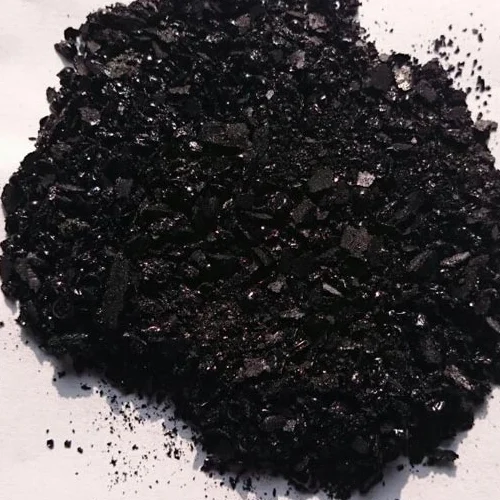Exploring the Beauty of Indigo Dyed Fabrics and Their Unique Charm
The Allure of Indigo Dyed Products
Indigo dyeing is an ancient craft that has captivated cultures around the world for centuries. Known for its deep, rich blue hue, indigo has been used to color textiles, fabrics, and even ceramics. The process of creating indigo-dyed products is both an art form and a science, involving a unique fermentation process that transforms natural indigo leaves into a vibrant dye. Today, indigo-dyed products are not only cherished for their aesthetic appeal but also for their cultural significance and sustainable attributes.
A Historical Perspective
Indigo dyeing traces back over 5,000 years, with origins in regions such as India, Egypt, and China. The Deep Indigo Blue was a color reserved for the elite, symbolizing wealth and status. The distinct dyeing technique varied from one culture to another, but the essence remained the same a natural method of pigment extraction, using fermented leaves from the indigo plant (Indigofera tinctoria). As trade routes expanded, indigo became a globally sought-after commodity, influencing fashion and textile industries across Europe, Africa, and the Americas.
The Dyeing Process
The process of dyeing with indigo is fascinating and labor-intensive. It begins with the fermentation of indigo leaves, which are soaked in water and allowed to ferment for several days. This fermentation produces a soluble form of indigo called indigo white. When the fabric is dipped into the solution of indigo white, it emerges in a pale green hue. As it is exposed to air, the fabric undergoes oxidation, transforming into the deep blue that indigo is famed for. The more times the fabric is dipped, the darker the shade becomes, allowing artisans to create a spectrum of blues from soft pastels to deep, saturated tones.
Cultural Significance
indigo dyed products

Indigo-dyed products carry a rich cultural heritage. In Japan, the art of shibori, a technique of folding and binding fabric before dyeing, elevates indigo textiles into a form of wearable art. African cultures use indigo in traditional garments, often as symbols of identity and community. In the Americas, indigo dyeing has been revived by indigenous artisans, emphasizing the importance of sustainable practices and the reclamation of traditional techniques. These practices not only keep cultural traditions alive but also promote local economies and provide a sustainable alternative to synthetic dyes.
Sustainable Fashion
In recent years, the movement towards sustainable and ethical fashion has gained momentum, and indigo-dyed products fit beautifully into this narrative. Unlike synthetic dyes, which can be harmful to the environment, natural indigo is biodegradable and significantly less toxic. This has prompted a resurgence in the interest of indigo, with artisans and brands embracing its eco-friendly properties. Many contemporary fashion labels are turning to indigo dyeing, producing garments that not only look stunning but are also created with a minimal environmental footprint.
The Aesthetic Appeal
What makes indigo-dyed products so compelling is their unique aesthetic. Each piece holds its own story, reflecting the individual artistry of the dyer. The gradual shifting of color and the depth of indigo create a timeless appeal, making it a favorite among designers and consumers alike. From clothing such as denim jeans to home decor items like cushions and bed linens, indigo can effortlessly blend into various styles, adding a touch of sophistication and charm.
Conclusion
The world of indigo-dyed products is a vivid tapestry woven with history, culture, and artistry. As we become more conscious of our purchasing choices and their impact on the planet, indigo dyeing stands out as a sustainable practice that respects tradition while promoting modern aesthetics. Whether through handcrafted textiles or innovative designs, the allure of indigo continues to inspire a sense of connection to our shared human heritage, reminding us of the beauty of craftsmanship and the importance of sustainable living. In a world increasingly leaning towards fast fashion, embracing indigo not only adds elegance to our lives but also supports the artisans and traditions that keep this ancient craft alive.
-
The Timeless Art of Denim Indigo Dye
NewsJul.01,2025
-
The Rise of Sulfur Dyed Denim
NewsJul.01,2025
-
The Rich Revival of the Best Indigo Dye
NewsJul.01,2025
-
The Enduring Strength of Sulphur Black
NewsJul.01,2025
-
The Ancient Art of Chinese Indigo Dye
NewsJul.01,2025
-
Industry Power of Indigo
NewsJul.01,2025
-
Black Sulfur is Leading the Next Wave
NewsJul.01,2025

Sulphur Black
1.Name: sulphur black; Sulfur Black; Sulphur Black 1;
2.Structure formula:
3.Molecule formula: C6H4N2O5
4.CAS No.: 1326-82-5
5.HS code: 32041911
6.Product specification:Appearance:black phosphorus flakes; black liquid

Bromo Indigo; Vat Bromo-Indigo; C.I.Vat Blue 5
1.Name: Bromo indigo; Vat bromo-indigo; C.I.Vat blue 5;
2.Structure formula:
3.Molecule formula: C16H6Br4N2O2
4.CAS No.: 2475-31-2
5.HS code: 3204151000 6.Major usage and instruction: Be mainly used to dye cotton fabrics.

Indigo Blue Vat Blue
1.Name: indigo blue,vat blue 1,
2.Structure formula:
3.Molecule formula: C16H10N2O2
4.. CAS No.: 482-89-3
5.Molecule weight: 262.62
6.HS code: 3204151000
7.Major usage and instruction: Be mainly used to dye cotton fabrics.

